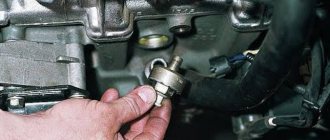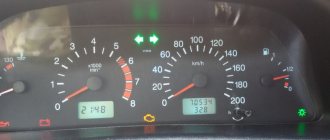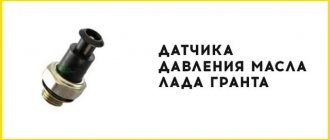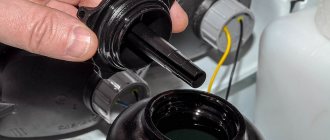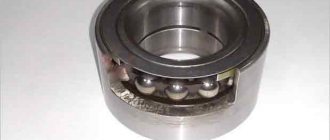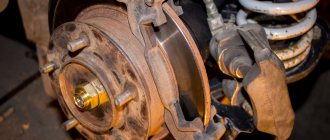Car problems are unpleasant for every driver. If a metallic clanging occurs in the engine (we are talking about a Chevrolet Niva car), first of all pay attention to the knock sensor. Most often, its breakdown causes power unit failures.
You will learn from the article how to replace the knock sensor on a Niva Chevrolet, its functions, location, signs of inoperability, causes of failure, and testing methods. The information will help you make the right decision during an emergency.
Problems with engine detonation on a Chevrolet Niva car
The problem of detonation is also familiar to the Chevrolet Niva. Coming from an SUV family, the Niva has the peculiarity of frequent trips not only off-road, but also in hills and mountainous areas. Therefore, when climbing at low speed and in high gear, you sometimes hear the sound of a metallic clatter. This phenomenon can lead to the following types of problems:
- Engine failure resulting from the action of a destructive force on the cylinder head and crank mechanism;
- Burnout of the cylinder head gasket (cylinder head), which occurs when the temperature rises to critical values during detonation. Often the first one to become unusable and requires immediate replacement;
- Piston burnout. Corrosion of the piston crown appears and with frequent exposure to this phenomenon, it leads to burnout.
Therefore, it is necessary to control the operation of the engine when moving up at low speeds and in high gear. Detonation can contribute to the failure of the cylinder block, pistons and crankshaft of a Chevrolet Niva, which can only be corrected by replacing them with new ones, which will be practically very expensive.
The true reasons for the occurrence of this phenomenon on the Chevrolet Niva
All cars are susceptible to this phenomenon. The main reasons that lead to this effect are:
- Circumstances under which the Chevrolet Niva is operated. This is exactly the case when climbing a steep hill at a speed below 40 km/h and in fourth gear;
- Quality of the fuel mixture. If the octane number is low, then detonation is guaranteed. A high number ensures detonation resistance;
- Design characteristics of the motor. These include: the condition of the spark plugs and their location, the shape of the combustion chamber, the compression ratio and the shape of the piston.
What methods of protection are provided in Shnivy against detonation?
Chevrolet Niva is equipped with a knock sensor. It is designed to protect the motor from this effect, as well as to display the process of its occurrence in the form of a light alarm. The sensor is a sensitive element made of piezoceramic material. On the Chevrolet Niva it is located in the area of the cylinder block. The operating principle of the sensor is as follows:
- When the phenomenon of engine detonation appears, the amplitude of its vibrations increases;
- The built-in controller on the instrument panel corrects the ignition timing, which helps to dampen the phenomenon;
- The signal to the controller is supplied by a sensor, which generates an incoming voltage signal that occurs under certain engine vibration parameters;
- The controller is also capable of displaying a sensor malfunction in the form of a light alarm on the instrument panel. The alarm is represented by the inscription “CHEK ENGINE”, familiar to all drivers, which is highlighted in red.
This is interesting: Tuning Lifan Solano with your own hands: interior, chip tuning
Where is the Knock Sensor on a Chevrolet Niva?
Where is the Neva Chevrolet knock sensor located and its malfunction?
One of the most popular domestic cars is the Niva Chevrolet. This four-wheel drive vehicle has a gasoline engine and is classified as an SUV. Based on this, Niva tends to often travel through bumps and obstructions. The operating conditions of this vehicle are to provide maximum engine protection.
The first sign that can be seen is the so-called detonation. Where is the sensor located? How to check the crankshaft sensor? Replacing antifreeze with Cherry Tigo. In other words, a knock on the engine.
One of the parts of electronic vehicle control systems is the knock sensor. Website about Chevrolet Niva
knock sensor, press the spring clamp of the harness block.
Despite its small size, it performs the most important functions in a car.
What does the Niva Chevrolet knock detector say?
There are three main functions:
- car speed;
- car power:
- fuel consumption.
This is a so-called control system that displays errors on the dashboard: “high signal level” and “low signal level,” which indicates a malfunction in the device.
Knock sensor
on Niva Chevrolet it is located on the front side of the cylinder block. For stable operation of the car engine, it is necessary that the overrunning angle be in the normal range.
If the latter goes beyond the limits, the engine overheats and, as a result, excessive fuel consumption.
Replacing the knock sensor on a Chevrolet Niva
Knock sensor error
0327.
Knock Sensor Circuit Low Signal
Interesting work of the Chevrolet Knock Sensor
Lacetti. (Phase sensor, where which sensor is located, dismantle the headlight on a VAZ-2110 for. All videos on the page.
Faulty parts can occur for various reasons:
- signal wires were cut;
- the braid was cut off;
- short circuit;
- control unit failure.
How to deal with a faulty knock sensor on a Niva Chevrolet
Before you confront the car dealer, it is best to check the electrical connection. But if the spare part is still faulty, it is recommended to replace it.
- How to replace the detonation part
- To do this, we need a new sensor, a “13” key and 20 minutes of free time.
- Next we will carry out three actual actions:
- Turn off the ignition. Carefully disconnect the sensor terminal.
- The key is unscrewed with a bolt, which the spare part is attached to the cylinder block.
- Remove the sensor from the cover.
To install a new element, we perform the same algorithm of actions, but in reverse order. A good sensor ensures power and long life for your car's engine. A new DD costs around $12-15.
It's in the app
General program, knock sensor,
sensor
on
Chevrolet Niva .
Therefore, sometimes it is better to carry out routine checks on the functionality of this part, because repairing a car engine is much more expensive.
There is a special offer on our website. You can get a free consultation with our corporate lawyer by simply submitting your question in the form below.
Source: https://autoviber.ru/gde-nahoditsja-datchik-detonacii-na-nive-shevrole/
Typical breakdowns
Be sure to listen to how the engine operates as the load increases - if even the slightest metallic clatter appears, be sure to make a diagnosis.
Otherwise, you may experience the following problems:
- Burnout of the gasket under the cylinder head. When detonation occurs, the engine temperature increases.
- Destruction of the pistons, as they all corrode.
- Very often, elements of the crank mechanism and cylinder head are destroyed.
If you are driving your car up a hill and the gear is in high gear, be sure to monitor the engine. If you subject the engine to heavy loads, you will contribute to the appearance of detonation knocks. As a result, many elements of the car will fail, and this is the first step towards a major overhaul.
How does detonation occur in a Chevrolet Niva car?
Like any car equipped with an internal combustion engine, the Chevrolet Niva may experience problems with detonation over time. And considering that it is mainly used to overcome obstacles and drive off-road, the risks increase several times. Therefore, it is important to listen to the operation of the engine under load and, if a metallic clatter appears, visit diagnostics, so as not to develop a number of problems over time:
- destruction of the cylinder head and crank mechanism
- burnout of the cylinder head gasket. This is due to the fact that during detonation the operating temperature of the engine increases significantly.
- piston burnout. occurs as a result of corrosion of the piston day.
Therefore, when moving up at low speeds and in a selected high gear, it is necessary to control the operation of the engine. If you give an increased load and contribute to the occurrence of detonation, you can ultimately damage a large number of car components, which will lead to the need for expensive major repairs.
What are the main elements it consists of?
The detonation controller is a complex assembly containing the following elements:
- connector where the power cable is connected;
- threaded connection to the block;
- sensitive element.
The sensor is made in a closed housing and cannot be repaired if it breaks. If there are any problems, the entire part should be replaced.
Verification methods
It is easy to check the inoperability of the DD yourself without dismantling it by conducting preliminary testing.
How to do it:
- put the engine at idle speed (about 2000 rpm);
- lightly tap with a hammer near the sensor.
A drop in engine speed (which will be audible) will indicate the serviceability of the part . If the speed remains unchanged, then the piezoelectric element is tested additionally. To do this, the DD will need to be removed by unscrewing the mounting bolt and disconnecting the block.
Then use a voltmeter or multimeter .
The procedure is as follows:
- connect the tester to the DD contacts;
- set constant voltage mode;
- Using light taps on the sensor, monitor the meter readings.
Voltage fluctuations of up to 0.2 volts are a sign of the operating condition of the DD . If there are no voltage surges, it means it is damaged and must be replaced.
This is interesting: Timing chain ZMZ-405: do-it-yourself replacement
Sensor check
To check with a multimeter, just follow a simple procedure.
- Remove the sensor from the engine.
- Set the tester to DC voltage meter mode.
- Connect the terminals of the devices in the standard sequence.
- Tap the sensor body with moderate force with a screwdriver or other object.
- During the master’s manipulations, the readings on the device should change (the device is working). If the signal is static, the part is damaged and requires replacement.
Where is it located?
Many people wonder where to find this knock sensor?! The location of the knock sensor is in the engine compartment of the Niva, namely on the cylinder block near the oil filter.
The location of the sensor is determined by the fact that this is the most sensitive area for detecting various engine detonations. This helps to quickly localize the problem in order to avoid engine breakdowns.
Replacing the sensor
The procedure for replacing the knock sensor on a Chevrolet Niva is quite simple. You need to adhere to the following sequence:
- Find the location of the element on the engine block. And it is located in the middle part of the block; a wire made of a corrugated tube is connected to it.
- Prepare your tools. A 13mm wrench and a screwdriver will be enough.
- For convenience, you need to unscrew the bolt securing the front tube strut in the gun. After carrying out the necessary manipulations, this spacer must be moved to the side.
- Press the latch to disconnect the block from the sensor.
- Using a 13mm wrench, unscrew the bolt that secures the sensor to the engine block.
- Install the new element in reverse order.
It is advisable to check the integrity of the electrical wiring before installing a new sensor to ensure that it is working correctly. Depending on where the knock sensor on the Chevrolet Niva is purchased, its price may vary between 450-650 rubles.
Engine operation is often accompanied by various types of failures. One of these failures is detonation, which involves prolonged engine operation when the ignition is turned off. From the technical side, this occurs as a result of explosive ignition of the combustible mixture in the engine cylinders.
1. When a combustible mixture enters the cylinder, it ignites when the piston does not reach top dead center by several degrees. Complete combustion of the mixture is completed when the piston reaches the top point. This is how the normal operation of any internal combustion engine is carried out. 2. The phenomenon of detonation occurs when the piston reaches the middle of the compression stroke. At this moment, the piston receives a counterforce, resulting in reduced engine power.
Problems with engine detonation on a Chevrolet Niva car
Price and article
Below is a table with prices for knock sensors for Niva from manufacturers that have proven themselves well in the market.
| Manufacturer | vendor code | Price, (rubles) |
| LADA (original) | 21123855020 | 200-400 |
| "Road map" | 21123855020 | 250-360 |
| Fenox | SD10100O7 | 200-400 |
| ERA | 550489 | 300-400 |
| Decaro | 2112-3855020 | 380-500 |
Is it possible to avoid detonation?
Pay attention to where the knock sensor is located on the Chevrolet Niva. It is located in the center of the engine block. The distance from the sensor installation location to the 1st and 4th cylinders is the same, thanks to this it allows you to capture all detonation knocks that appear in the internal combustion engine.
And in order to eliminate the possibility of detonation, it is enough to follow a few simple rules:
- When you drive your car uphill or off-road, you need to downshift. It is desirable that the engine operates at a frequency of 2500..3500 rpm.
- Monitor the condition of the spark plugs - the quality of ignition of the mixture depends on them. It is better to occasionally check the compression in each cylinder.
- It is not recommended to use gasoline with a low octane number. It is advisable to fill the tank only with fuel recommended by the car manufacturer.
Purpose of the knock sensor
This part is equipped with vehicles that run exclusively on gasoline and have an injection type engine . Knock sensors (DS) control the combustion process of liquid fuel, normalizing engine operation. This happens with the help of an electronic control unit (ECU), which, in the event of a sensor malfunction, ceases to see the detonation processes occurring in the cylinders.
Reference. Detonation is considered to be an electrical impulse that occurs at the moment of ignition. Thanks to him, the car starts. At this moment, complex physical and chemical processes are taking place inside the motor.
Under high loads on the vehicle (steep climb, off-road), an imbalance occurs in the engine combustion chamber between the moment of fuel injection and its ignition. This affects the appearance of strong mechanical vibrations. DD eliminates such phenomena by sending a specialized electrical signal to the ECU.
The cause of detonation may be low-quality gasoline with a low octane number or design features of the engine. The positive aspect of the sensor’s operation is that it promptly protects the power unit from destruction, produces significant fuel savings and allows the car to develop maximum power. All this is extremely important for an SUV.
Engine operating principle
Detonation very often occurs when going uphill. In this case, the car is moving slowly, and the speed is increased. But do not worry, since this phenomenon is called glow ignition, and it does not indicate that the engine is not working properly.
Any internal combustion engine works according to the following principles:
- A mixture of gasoline and air is supplied to the combustion chamber of the cylinders, where it is ignited by a spark on the spark plug. Moreover, the piston should be literally a few millimeters from top dead center. As soon as the piston reaches the top position, the greatest pressure is generated in the cylinder. At this moment, the entire air-fuel mixture will completely burn.
- During normal operation of the knock sensor on the Chevrolet Niva, signs of this phenomenon will not appear. This device will help get rid of the manifestation of detonation. And it appears when the mixture begins to ignite much earlier than it should. This usually happens halfway to top dead center. And when the air-fuel mixture burns, a force is exerted on the upper part of the piston, which pushes it in the opposite direction. At the same time, the engine power is reduced, and significantly, and its parts wear out.
Knock protection
The engine management system contains a knock sensor - it allows you to determine the presence of knocks, as well as evaluate their strength. If detonation suddenly appears and the sensor is faulty, the electronic engine control unit will generate an error signal. On the contrary, when the sensor is working properly, it will begin to produce a signal.
The design of the device is based on a piezoelectric element, which generates energy under the influence of impacts. And after that, the electronic control unit processes the signal and analyzes its level. After this, it sends a signal to change the ignition timing.
Causes of breakdowns
Failure of the pressure sensor circuit occurs for various reasons . Any of them can cause engine detonation. A thorough examination and diagnosis will help determine which one.
It could be:
- unsuitability of the piezoelectric element itself;
- outgoing cable break;
- sensor short to ground;
- lack of contact in the connector block;
- damage to the shielding braid.
Under no circumstances should you delay troubleshooting . The consequences of detonation can be very serious, namely, they will cause damage to the engine itself.
How is the car’s built-in protection against detonation implemented?
In order to monitor engine operation, a knock sensor is installed in the Chevrolet Niva. When problems occur, it sends a signal to the dashboard, where an alarm light sensor appears. The sensor design itself is a particularly sensitive piezoceramic element, which is located in close proximity to the cylinders. It reacts to the occurrence of increased vibrations that appear as a result of engine malfunctions. After which the ECU begins to send a signal to correct the ignition timing. In this case, the signal received by the controller produces an additional light signal on the instrument panel in the form of the CHEK ENGINE icon.
Detonation effect
On a Chevrolet Niva, a knock sensor error can be read using a special diagnostic scanner.
If there is an on-board computer, an error code will be displayed on it:
- 0327 - excessively low signal level from the knock sensor. Most likely, there is a break in the circuits connecting the sensor to the control unit.
- 0328 - signal level too high. The cause of this error may be a malfunction of the device itself.
The Chevrolet Niva is a very specific car, as it is designed for driving in conditions where there is practically no road. Therefore, any problems with it can simply be fatal. The risk of stopping in the middle of the forest increases several times.
Search
The Chevrolet Niva knock sensor is necessary to ensure smooth engine operation. This allows the engine to function normally in all operating modes. Using ignition timing and fuel injection configuration, maximum power can be obtained. Knock. This is one of the defects that can really damage the engine. This happens because the fuel mixture burns in the combustion chambers of the cylinder.
Knocking noise is very common when climbing a mountain. At the same time, the car moves slowly, and the speed increases. But don’t worry, because this phenomenon is called glowing, and then it does not mean that the engine is faulty.
At least some gasoline engines operate on the following principles:
- A mixture of gasoline and air is fed into the combustion chamber of the cylinder, where it is ignited by a spark at the spark plug. And the piston should be almost a few millimeters from top dead center. When the piston reaches its top position, the greatest pressure is found in the cylinder. At this moment, the entire air-fuel mixture will completely burn.
- During normal operation of the knock sensor on a Chevrolet Niva, there will be no signs of this phenomenon. This device will help you get rid of detonation. And this happens when the mixture begins to burn much earlier, if necessary. This usually occurs halfway to top dead center. And when the air-fuel mixture burns, a force pushing it in the opposite direction will act on the top of the piston. At the same time, the engine power decreases, significantly, and its parts wear out.
On a Chevrolet Niva, the knock sensor error can be read using a special diagnostic scanner.
If there is a fighter, it will show an error code:
- 0327. Extremely low signal from the knock sensor. Most likely, the circuit connecting the sensor to the control unit is open.
- 0328. very high signal level. This may be caused by a malfunction of the device itself.
You may also like
- Mazda 6 What Oil to Pour into the Engine What oil to pour into the Mazda 3 engine: recommendations, approvals Table engine oil from Mazdagid.ru Car owners may be wondering what kind of oil to pour into the Mazda 3 Engine We have compiled a summary table that shows which customers…
- Ford Focus 3 Low Beam Headlight Fuse
What to do if your loved one’s light doesn’t start to shine World Ford Focus of the second generation? This happens at any time with any car. Cigarette lighter for Ford Focus 3, main fuse for low beam headlights. 75. 15. When the lighting… - Which Oil is Best to Fill in a VAZ 2114?
Which oil to fill in a VAZ 2114 gearbox? The VAZ 2114 gearbox oil for the most part determines the absence of problems with the gearbox lever. Choosing the right oil in a VAZ 2114 box, unfortunately, is a very important task. Regular and timely replacement... - Auto sales in China plummet as virus spreads
Auto sales in China fell to a new low in January as the coronavirus kept buyers away from showrooms, adding to the gloom hanging over the industry. Retail auto sales fell 22% to 1.71 million units , which was the most b… - Replacing the Radiator Heater VAZ 2108 High Panel
replacement VAZ 2108, 2109 or 21099 radiator plate If this changes the heater radiator on the VAZ 2108 (2109, in other words, 21099) according to all recommendations, then before this procedure it is necessary to drain the coolant and completely disassemble the panel ... - Heated seats not working Mazda 6 Gh
Heated seatsPublished February 01, 2012 23:11 Heated driver seats, passenger seat, reason? Tell me the possible options for self-removal or is this just a service? thanks in advance Well, let's start, as always, with fuses and...
The Chevrolet Niva is very specific because it is designed for driving on conditions where there are practically no roads. Therefore, any difficulties with this can simply be fatal. The risk of slowing down in the forest increases several times.
Be sure to listen to how the engine operates as it increases the load. Be sure to make a diagnosis if there is even a small iron crack.
Otherwise, you may experience the following problems:
- Burning gasket under the cylinder head. When pressed, the engine temperature rises.
- Destruction of pistons, as they are all corroded.
- Elements of the crank mechanism and cylinder heads are often destroyed.
In this case, if you are driving your car uphill and the crossing is on, be sure to keep an eye on the engine. In this case, if you subject the engine to heavy loads, you will cause detonation shocks. As a result, many auto parts will fail, and this is the first step towards serious repairs.
Pay attention to where the knock sensor is located on the Chevrolet Niva. It is located in the center of the walk-behind tractor. From the location of the sensor, the distance to the 1st and 4th cylinders is uniform, thanks to which it allows you to catch all the knocks that occur in a gasoline engine.
Diagnostics and replacement of Chevrolet Niva phase sensors
And to eliminate the possibility of detonation, it is enough to adhere to several general rules:
- When you drive your car uphill or SUV, you need to lower your gear. It is better for the engine to run at 2500-3500 rpm.
- Watch the candles. The quality of ignition depends on them. It is best to check the compression in each cylinder from time to time.
- Low octane gasoline is not recommended. It is best to only fill the fuel tank recommended by the vehicle manufacturer.
What to do in case of malfunctions
Due to the fact that the on-board wiring on the car suffers from low reliability. The DD check must be performed in stages. In the event of a malfunction, you should walk along the entire line, including the sensor, and visually assess its condition. If individual sections of the chain have apparently lost their integrity, they are replaced.
If replacing the wiring does not help, you need to dismantle and check the sensor.
Removing the sensor
Dismantling the device is quite simple. This does not require special tools or deep knowledge of mechanics. The part has one contact group and is attached to the engine block using a bolt with a No. 10 head. To remove it, you need to disconnect the wires and unscrew the fixing screw.
DIY replacement
To install another DD with and without air conditioning, an identical procedure should be followed.
- Place the machine on a level surface.
- Remove the terminals from the battery.
- Allowing the machine to cool down will make the work more comfortable.
- Disconnect the power terminal from the sensor. If the group is worn out or heavily oxidized, it is better to change it along with the sensor.
- Unscrew the fastening bolt and use a screwdriver to remove the damaged part.
- Place a new DD in the seat and reassemble the chain in the reverse order.
There is also a video in Russian on how to change a problematic sensor.
